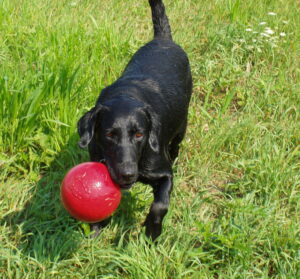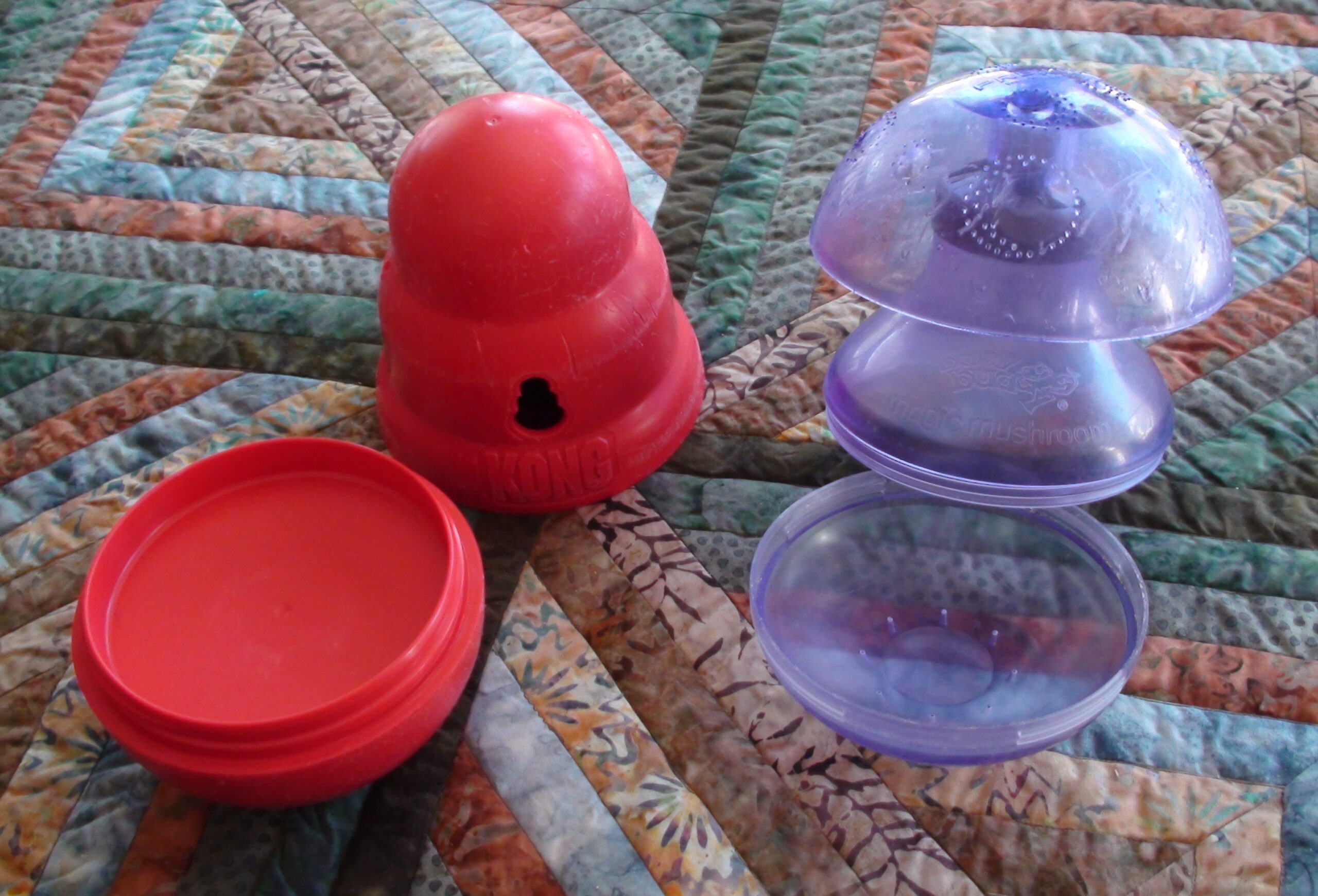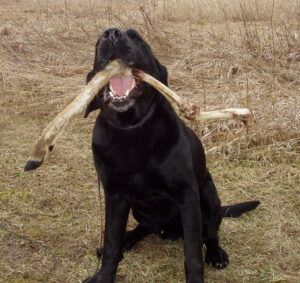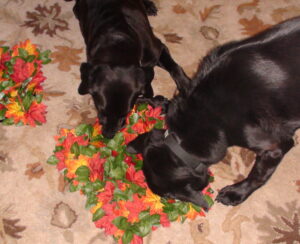Barks Blog
Dogs Require Daily Enrichment

As a professional dog trainer 60% of my cases are behavioral in nature. Training is about teaching dogs (and owners) how to do things while behavioral cases usually involve changing underlying emotional states such as anxiety, stress and fear. I often see lack of enrichment in the dog’s life in behavioral cases.
I often hear from owners they have a “high energy” dog who engages in annoying behaviors such as excessive barking, chewing, jumping on people, and general inability to settle down.
Very often the first recourse applied by pet owners is to greatly increase daily exercise to tire their dog. Maximizing daily exercise results in short-term exhaustion but ironically, sustained over-arousal may worsen behavior in the long-term. Using exhaustive physical activity to “tire” a hyper-aroused dog such as playing fetch for an hour each day may cause the adrenal gland to become enlarged (1) thus pumping even more adrenaline into the dog’s system resulting in a higher baseline of arousal.
Exhaustion and relaxation are not the same.
Hans Seyle published an article in 1936 identifying the general adaptation syndrome (GAS) and it consists of three phases:
1. Alarm phase (fight-flight) – This is acute activation of the sympathetic nervous system and rapid arousal.
2. Adaptation phase – The return to equilibrium, which may take considerable time depending upon the level of arousal and the presence of neurotransmitters and hormones associated with increased activity and stress.
3. Exhaustion phase – Due to the depletion of resources used during the excitement phase, a dog shuts down in an attempt to recuperate.
I try to help pet owners understand that exhaustion is an unhealthy state for their pets, and for themselves. Working together we find healthy ways to give their dogs more satisfying lives.
Dogs and humans have lived together for 32,000 years (2) and during that time most dogs had jobs until the last century. They have inherited the same genetic code for hunting, guarding or sounding the alarm, but most pet dogs find themselves unemployed. Many struggle to cope with the lack of stimulation associated with being modern canine couch potatoes.
Behavior experts largely agree most complaints expressed by pet owners are about normal canine behaviors, but those dogs are frustrated from expressing normal behaviors in ways that are acceptable to people living in modern society. In centuries past those same behaviors were welcomed, encouraged and promoted through breeding.
Let’s look at some ways to enrich a dog’s daily life.
Begin with a high-quality nutritional diet. Some pet owners prefer homemade diets and PetDiets.com is one source of information. I buy commercial dog foods following recommendations of The Whole Dog Journal and top the dry food with bits of meat, pumpkin, cheese, whole oatmeal or Chia seed.

They enjoy a wide range of tastes and textures. When their meal is sloppy I use a bowl, but they are often fed by way of a snuffle mat, Magic Mushroom or Kong Wobbler. I favor these for their durability and my dogs enjoy them.
For safety recall information I rely upon VIN Dog Food Recall Center and to avoid harmful ingredients I appreciate The Dog Food Adviser.
Next, ensure that dogs get adequate sleep. Puppies require 18-20 hours per day, with adults needing 12-14 hours. The best balance is periods of activity interspersed with rest. Research on street dogs by Sindhoor Pangal show their most common behavior is sleep, followed by social mingling and searching for their next meal.
That brings us to sensory enrichment. Dogs who are searching for food use their senses of smell, touch, hearing, taste and sight to detect and locate edibles. They express each of those naturally while scavenging and hunting. This taps into seeking behavior.
Ethologist Karolina Westlund states in her PPG webinar Animal Emotions – Your Guide to a Happier Pet and Better Relationship seeking behavior activates several parts of the brain. In the appetitive state (actively trying to find a resource) dopamine is flowing. Serving food in a bowl does not activate the seeking system. Only the consummatory mode is activated. That means earning a meal is far more satisfactory than just getting a lump of food in a bowl once or twice a day.
I satisfy my dog’s sensory needs every day with food-filled toys, using (lavender oil) aromatherapy and Adaptil pheromone, playing iCalmDog music, and through an assortment of animal scents and in walks. They trot along the trails joyfully, stopping to investigate scents and discovering hidden treasures.

In their outdoors play area I secretly place drops of mink, fox, deer or raccoon scent all about. When I bring them into the yard they are delighted to search and discover the scents, like little kids hunting for Easter eggs.
Similarly, they play Find It when I toss a handful of food into the grass and bring them out to use their olfactory system and discover every little tidbit. This game is a focused activity using sense of smell, seeking behavior and their (problem-solving) frontal cortex. It has a calming effect in most dogs.
Training games and shaping exercises keep a dog’s mind sharp, requiring focused attention and problem-solving. They are fun for people and dogs alike and are thought to be more taxing than straight exercise, as I have heard Dr. Ian Dunbar state.
For some dogs organized sports like agility and rally are very satisfying. Others derive great benefit attending a well-operated dog daycare or by a daily visit from a pet sitter.
Dogs who satisfy natural behaviors tend not to bark at things passing by the picture window all day, chew on your sofa, dig holes in the yard, soil your Persian rug, frantically jump on you when you return home from work or other annoying behaviors.
Observe when your dog is in a joyful state…and do more of that! With a bit of creativity you can make your dog and yourself happier.

References:
1) Hallgren, Anders. (2012). Stress, Anxiety and Aggression in Dogs. Cadmos Books, page 92.
2) Shipman, Pat. (2015). The Invaders: How Humans and Their Dogs Drove Neanderthals to Extinction. The Belknap Press of Harvard University Press.
